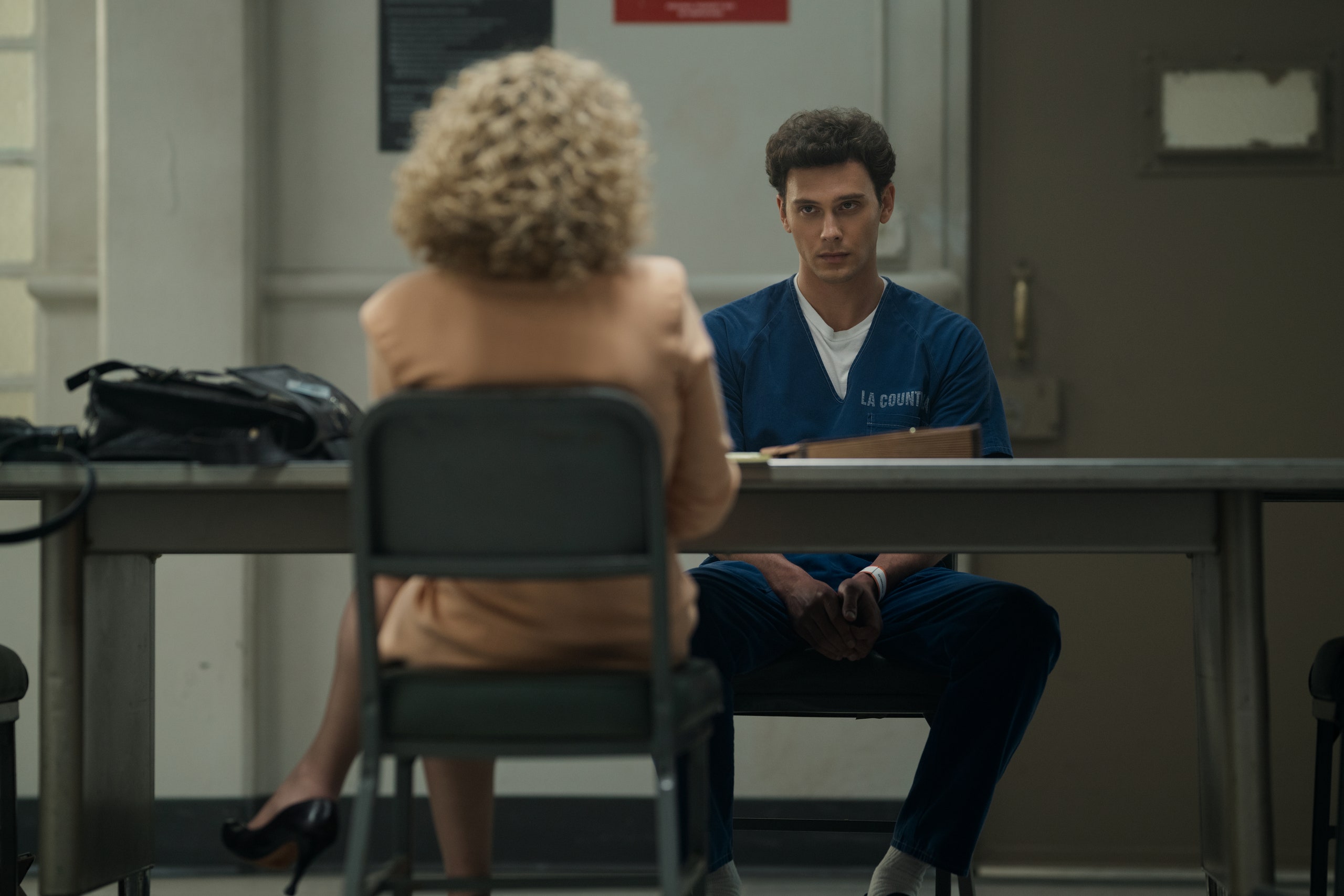"‘Monsters: The Lyle and Erik Menendez Story’ Showcases a Standout Episode, But Struggles With Direction | Vanity Fair"

The fifth episode of Monsters: The Lyle and Erik Menendez Story is a formal wonder, bold in its simplicity. We watch as Erik Menendez (Cooper Koch), who is in jail awaiting trial for the murder of his parents, unravels a history of horrific sexual abuse at the hands of his father. His lawyer, Leslie Abramson (Ari Graynor), has her back to the camera, nodding along and prodding for more specific detail as Erik tries to hold himself together. The camera ever so slowly pushes in, ending the single-shot, 35-minute episode in tight closeup on its harrowed subject.
One wonders if perhaps those behind the camera—director Michael Uppendahl, writer-creators Ian Brennan and Ryan Murphy—have seen the 2020 film Never Rarely Sometimes Always, the centerpiece of which is an unbroken shot of a young woman answering a sexual health questionnaire as she seeks access to an abortion. In that austere framing, a whole fraught narrative is laid bare. It’s bracing, unignorable—as is episode five of Menendez, titled “The Hurt Man.” Koch, an actor relatively new to the screen, blazes with ache and fury, wholly selling a story of how trauma has unmoored one young man from both himself and reality.
This might have been the defining episode of Menendez—a statement of intent, the oral defense of a thesis. Here, it seems, Brennan and Murphy are quieting down the darkly comic verve of the show’s preceding episodes—caustic, leering, nihilistic—to locate the actual humanity, howling with pain, at the center of the series. Empathy is suddenly earned, understanding flipped on its head. How could anyone watch this awful testimony and not be persuaded toward mercy?
But then the rest of the season happens, and Brennan and Murphy cast episode five into strange doubt. Was it all a sham? Is Erik perhaps an even bigger fake than his preening, conniving brother? The glib tone of Menendez would seem to suggest so. The brothers’ case falls apart; lies and omissions are uncovered; Brennan and Murphy’s portrait of spoiled scions sharpens into outright condemnation. What, then, was the purpose of “The Hurt Man,” a stand-alone marvel that withers in its broader context?
The charitable read is that the subterfuge was the point. We are meant to be utterly convinced by this sad, wounded, handsome guy, only so we can be proven terribly wrong. The argument might be that our ever-mutating view on this case reflects the opinions of real Americans in the mid-1990s, when the Menendez trials were at the center of true-crime fascination. (Until O.J. Simpson came along, and did or didn’t do what he did or didn’t do.) Brennan and Murphy may be conducting a shrewd meta experiment, testing how audiences justify their prurient interest in gory details with expressions of sympathy. The uglier the details, the more likely we are to want to believe them. The show is doing the same snow job on us that the Menendezes did on their first juries. It’s all a trick, carefully calculated and insidiously clever.
The less generous read is that Menendez doesn’t know what it’s trying to say. That its wild yawing between credibility and crass sensationalism is evident not of a high-minded ambiguity, but of uncertainty. This is a series that often muddies the line between taboo eroticism and revulsion. It heavily implies, for example, some kind of sexual relationship between the brothers, but then coyly suggests that this is merely lurid speculation. It wants, in essence, to grimly titillate its audience and scold them too.
“The Hurt Man” exists, then, both to earn the kind of praise it already has—as a discrete, finely executed episode of television that stirringly confronts the realities of sexual abuse, suitable for Emmy purposes—and to stand as the series’ prime example of an enormous falsity. It exudes an irritating kind of ambivalence, self-serving and emptily cynical. As Menendez reached its conclusion, I found myself at a loss trying to suss out what we were supposed to take away from any of it. Perhaps particularly from “The Hurt Man,” of which the series seems at once proud and disdainful.
On the whole, Menendez has little consistent thought about Lyle and Erik. It is attracted to them, annoyed by them. It pants and sneers and shakes its head. Some tonal inconsistency is understandable; how else could a show capture both the ludicrousness of this story and its dire, mortal dimensions? But Brennan and Murphy push past that, into the realm of incoherence. “The Hurt Man” is the show’s most tightly focused episode. The rest swerve around willy-nilly, jumping from the brothers to Dominick Dunne (Nathan Lane)—then a Vanity Fair writer covering the case—to Abramson’s home life. Menendez lurches forward and backward in time in arbitrary segmentation. It mocks everything and then, on the turn of a dime, demands serious consideration.
One wants to see the master plan in all of this, to give Menendez the kinder interpretation that its variability is all by design. But while Lyle and Erik needn’t earn our trust, the show itself should. Brennan and Murphy instead fail any loyalty they’ve stoked; they’re too busy changing their minds about what they’re trying to say, what the grand idea of the project may be.
The problem of “The Hurt Man” might simply be in its placement. If it had been the show’s premiere, a shocking challenge to those who hoped to open with a grisly murder—a plea for compassion the series would then diligently dismantle—it could have worked. But putting it right in the middle—as an anchor, as either clarifier or distraction, as a climax in quality—badly warps the shape of Menendez. We become just as frustrated with the show as we do with Lyle and Erik’s menacing, babyish demands. Were these boys hurt? Are they dangerous, sociopathic fabulists? It doesn’t really matter, because the weather of Menendez shifts with every whim of its creators. Brennan and Murphy are a hung jury in their own right; Menendez ends in its own kind of mistrial.




